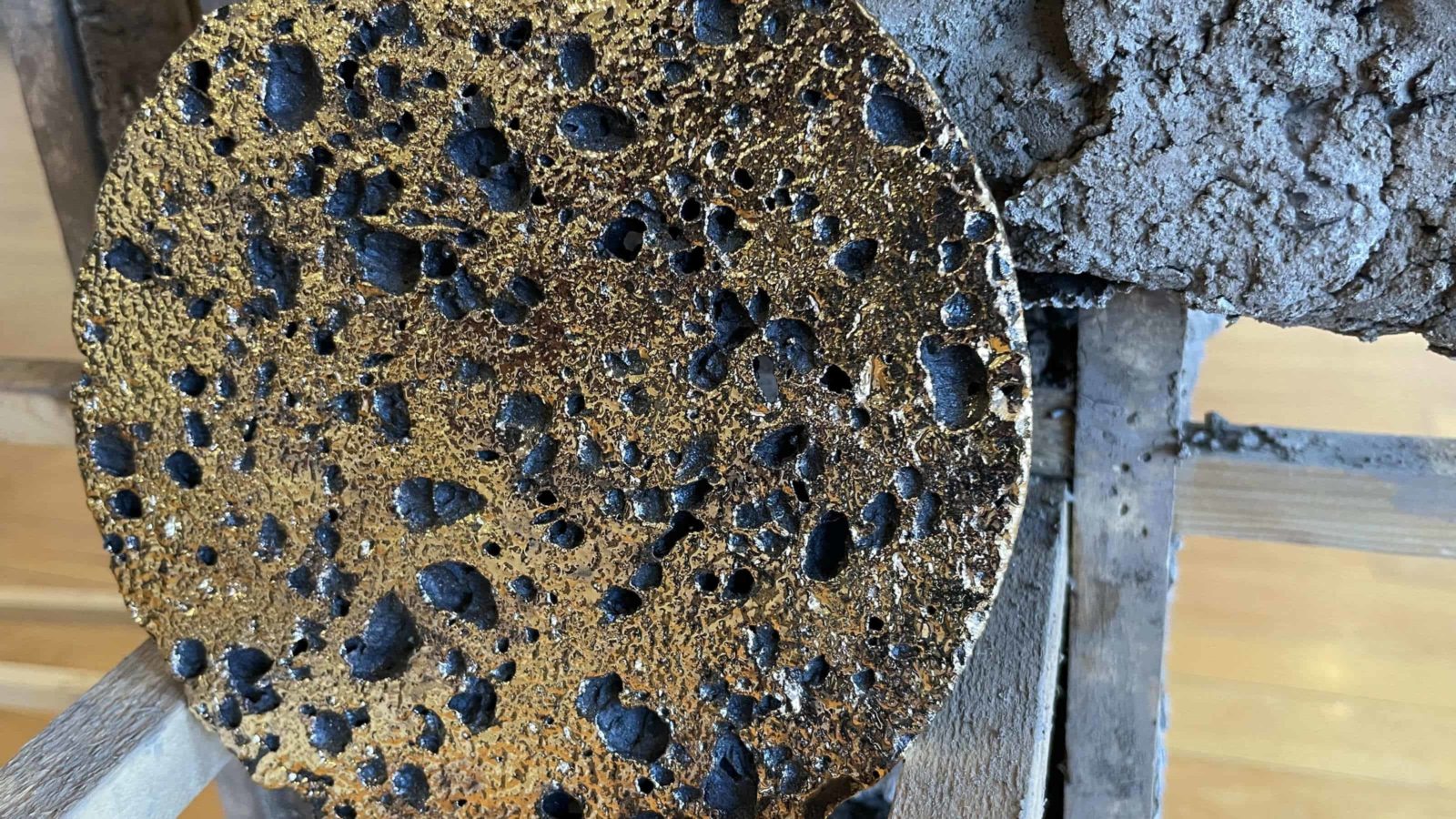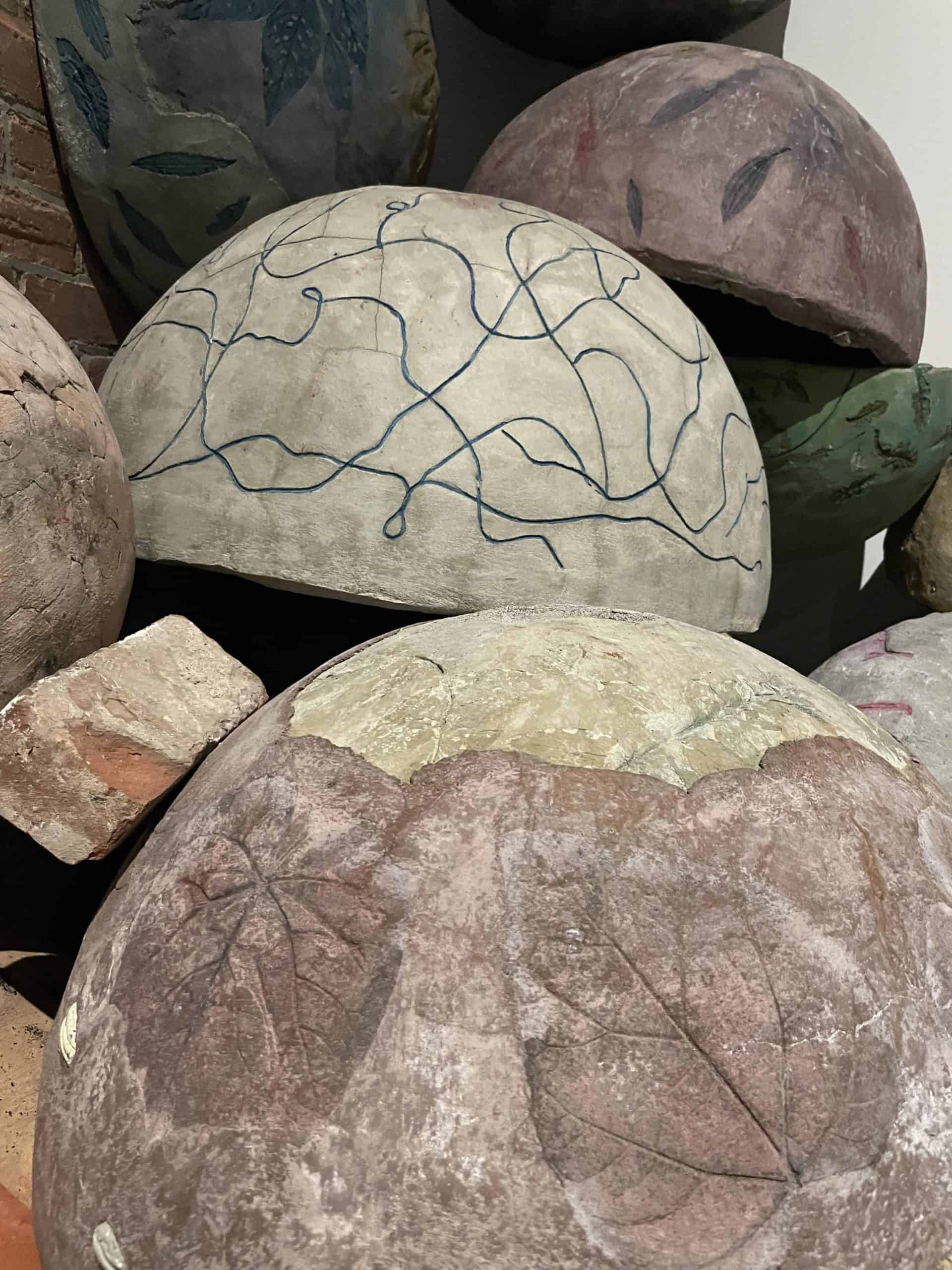Last summer in Southern California, a group of friends made bowls in their back yard, small enough to hold one-handed. They shaped and smoothed clay into cups and set them out to dry, and two days later they hardened them in a wood fire there and sat around it, talking together, while the clay took on a patina from the smoke.
The clay came from here, from the Sheffield pottery, says sculptor and installation artist Armando Guadaloupe Cortés. And a cup he made that night is here, in a room with worn brick walls and afternoon sunlight at Mass MoCA. It’s a mezcal cup, he says. It’s made for a liquor people have distilled from agave for hundreds of years in Mexico, near the town where he was born.
In the Berkshires on the same nights, friends were sitting around hand-thrown an earthenware fire pit. They were together outside in a pandemic summer, in a break in the rain, looking for warmth in a brazier the size of a soup kettle. And now it’s here too.
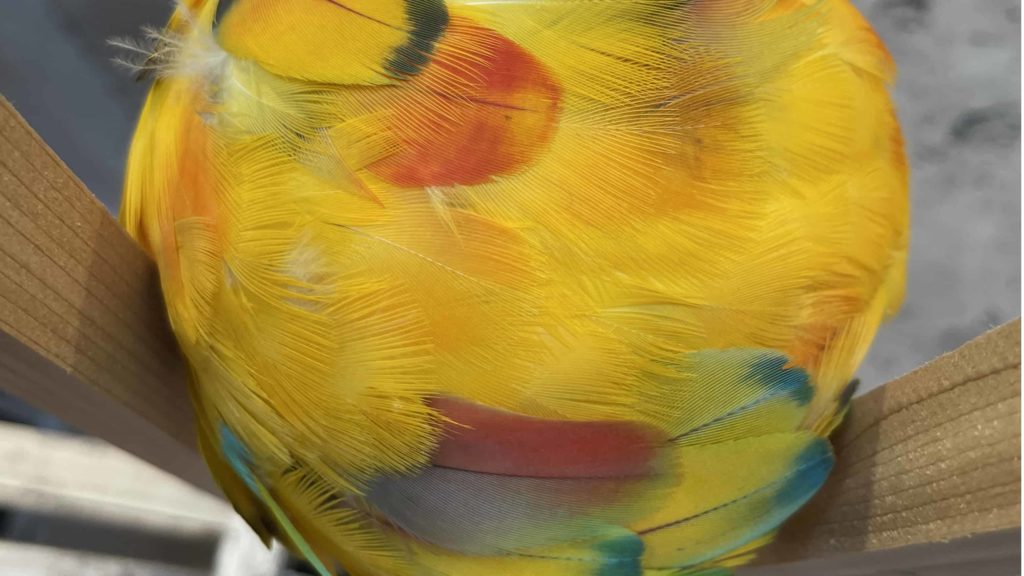
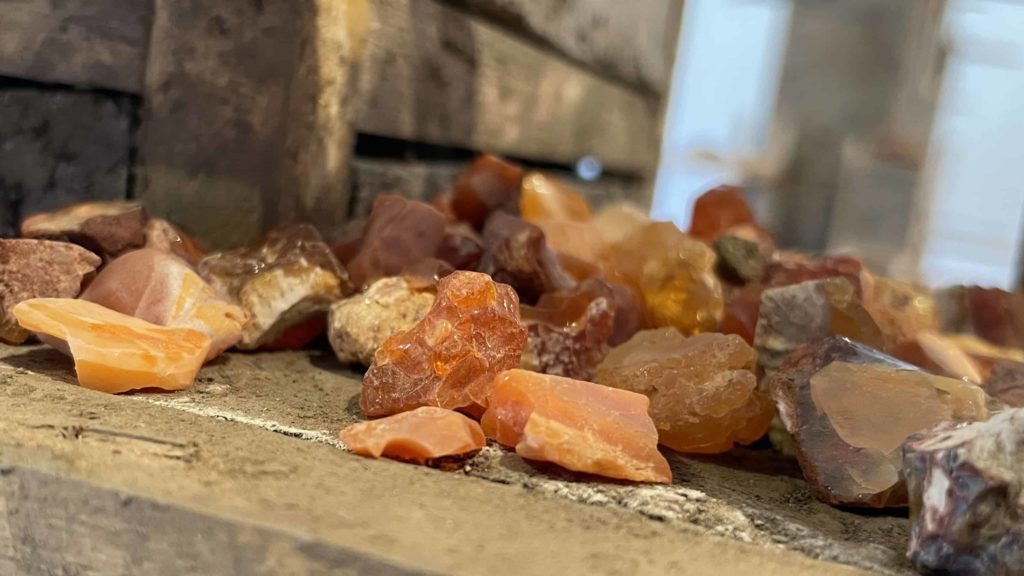

Armando Guadalupe Cortés’ 'Castillo' honors the people and the land in his native Mexico with vividly bright seeds as well as stones, feathers, figurines and more, at Mass MoCA.
Lily Cox-Richard made these ceramic fire pits and gave them out to people in the community. She asked people to use them and gather around them, and then she brought them together again in Weep Holes, one of three shows newly open at Mass MoCA this spring, curated by Denise Markonish.
In her work, like Cortés, she is weaving together questions of care and responsibility for the land, for community, culture and people.
“How do we get to the future,” Markonish asks in the exhibition, “and do so while taking care of one another — how do we mend the damage that is already done …”
Cortés’ cobalt blue mezcal cup sits in a niche on an adobe pillar. He has made an adobe arcade in a framework of cedar, and ledges hold flints, fire opals, seed pods of datura, brilliant red seeds of Texas mountain laurel — a wide array, many with roots in Urequío, Mexico, the small farming town where he was born.
He lives and works in Southern California, and he often comes home to see his family, he said in a conversation over zoom. In his installation, Castillos, he brings tangible ties to the people and the land, in a group show of new works in ceramics curated by Susan Cross.
He draws in art and crafts traditions going back hundreds of years, and they are contemporary and evolving. Work by ceramic artists near Urequío sits here near his own.
“Whenever it’s made, it’s original,” he said. “They’re the same hands, over distance, over time, and it’s the same clay.”
A disc with a pitted surface gleams like lava veined in gold. He made it a few years ago, while he was working as an exhibition manager at UCLA and had the use of their ceramics lab.
Discs echo through the show, he said, invoking place markers or stelae found at many Mesoamerican archaeological sites, each one a marker to a specific place, township, a city or a ruler.
Nearby a similar form has repeated in his work over the years. A circle of alabaster shows the even ridges of a grinding stone. Five years ago he was visiting home with his father, he said, and a cousin showed him old lamps, ploughs, farming equipment, things his family has used — a fragment of the door from their great-grandparents’ house, where his grandfather was born. She showed him a grinding stone made from basalt, with straight lines chiseled in the illusion of a spiral.
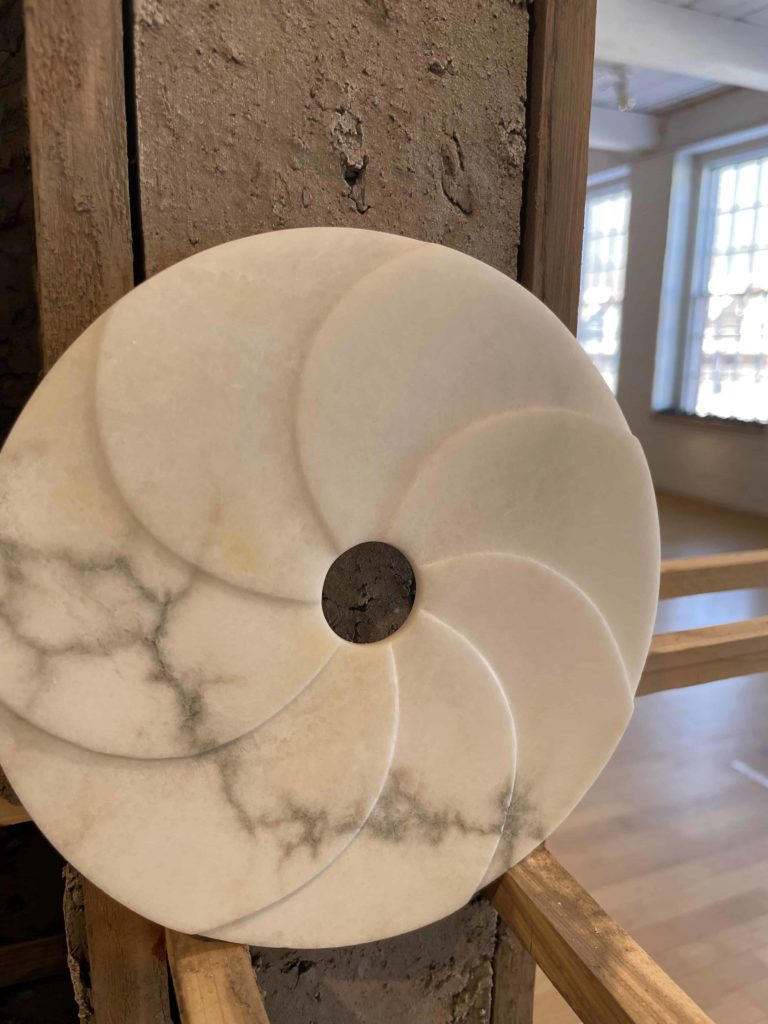
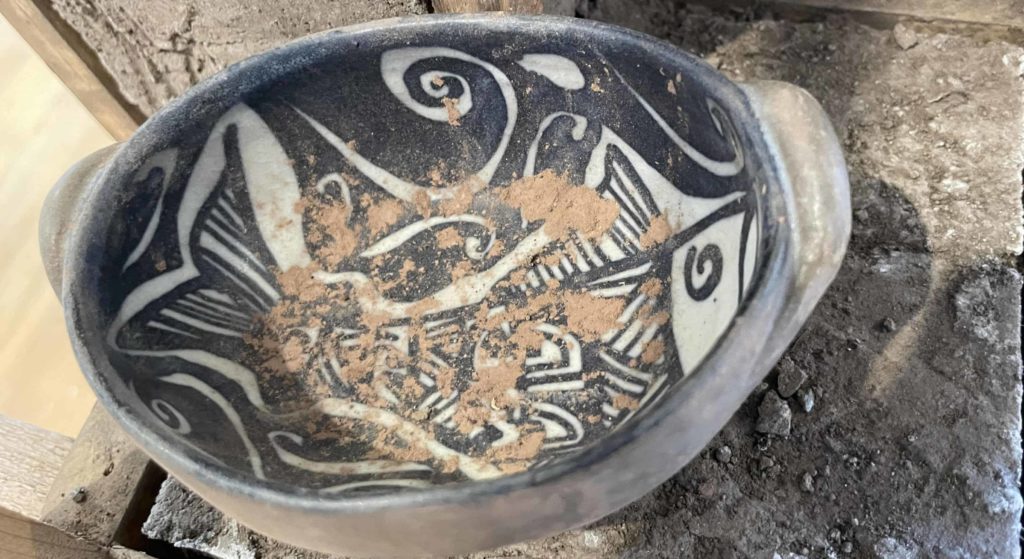

Armando Guadalupe Cortés’ 'Castillo' honors the people and the land in his native Mexico with clay figurines as well as vivid feathers, stones, seeds and more, at Mass MoCA.
He was taken with how beautiful it was, he said. It came from an old mill in town. They have a new mill now with a steel grinder for processing corn — he doesn’t think anyone there still grinds corn by hand in a metate, a stone for preparing corn by hand. And he thought, that old mill stone made food possible for the whole town, 600 people. He felt not just the weight of it but it’s purpose and service.
It touched a theme in his work, honoring the physical work and care for the community. that note of respect weaves through handmade vessels here and a film, el descanso en el gloria. The name translates to “rest when you’re dead,” he said. He had said that half-jokingly to his mother, when he was working full time and keeping up his studio practice on top of it, into the small hours.
“It became a joke between my mother and me about being devoted,” he said.
His mother told him he sounded like an old woman of the village. Her name was Enecleta, and her story goes back to a time when Urequío was building a church. The town has many springs, he said, but back then it no indoor running water. Enecleta would carry water in clay vessels uphill from the river to the work crews. She was a tough elder lady, he said, and she would keep on as long as the builders were working.
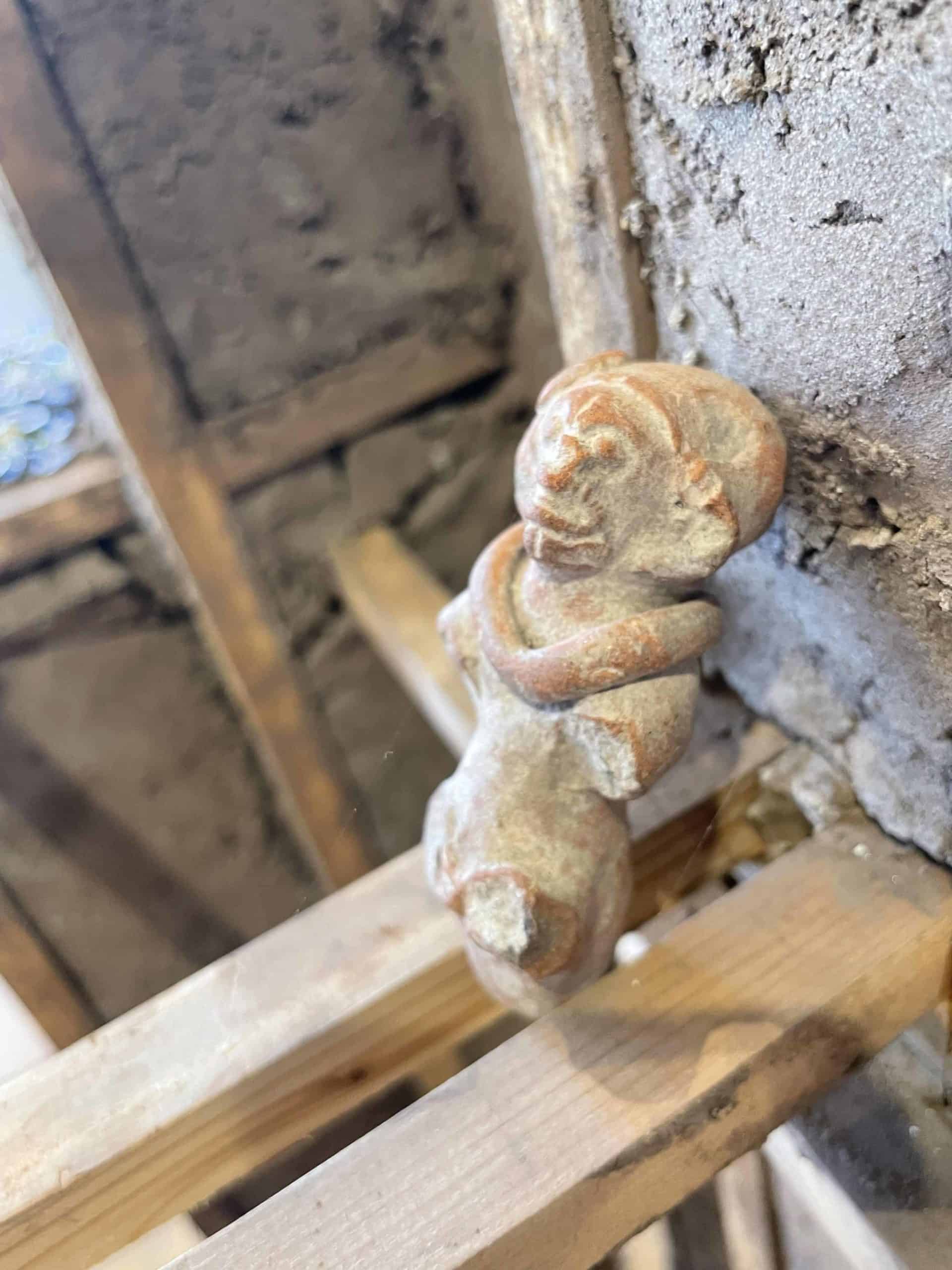
Armando Guadalupe Cortés’ 'Castillo' honors the people and the land in his native Mexico with clay figurines as well as vivid feathers, stones, seeds and more, at Mass MoCA.
Enecleta was committed to the church as he is to making his work and putting it out into the world, and more than that — in all of these seeds and cups, whistles, stones, he is recognizing loss and looking toward a different kind of future.
In his Castillos, he is keeping stories and histories alive and waiting. A clay whistle or an amulet hold the stories of people who live in Urequío and the towns around it, their art and craft, cultures and languages, knowledge of plants and animals … and what they have lost in centuries of colonial imposition. And their tools are gathered here.
“They are not on display,” he said, “but in wait.”
As he has made and gathered artifacts, he has learned their pasts and imagined their futures. He has learned to make armadillo masks, and in the process he has learned that his family and artists in their region have made them for centuries and worn them to holiday processions and festivals that once brought together the whole town.
In the lands around his home, mesoamerican traditions have mixed with Spanish, he said. The Spanish colonists imposed their culture and religion on the Native communities, as the English did in the U.S., though in different ways. It was a way to control people, working class, peasants, he said.
But it also became a way of survival. To keep traditions alive, to keep them from being suppressed, local Indigenous families would blend their own traditions into the Catholic celebrations the Spanish were imposing on them, he said. And so a town celebrating los posadas, the nine days of Mary and Joseph’s travels from Nazareth to Bethlehem, wore masks from a tradition that had lived in this land for hundreds of years.
And here at Mass MoCA they are ready for use. They are waiting, he said, the way his family will keep something conveniently where they last used it, sheers near the fruit trees in the back yard, a rake leaning on one tree and a fruit-picker against another, safe until someone comes to pick them up again.

